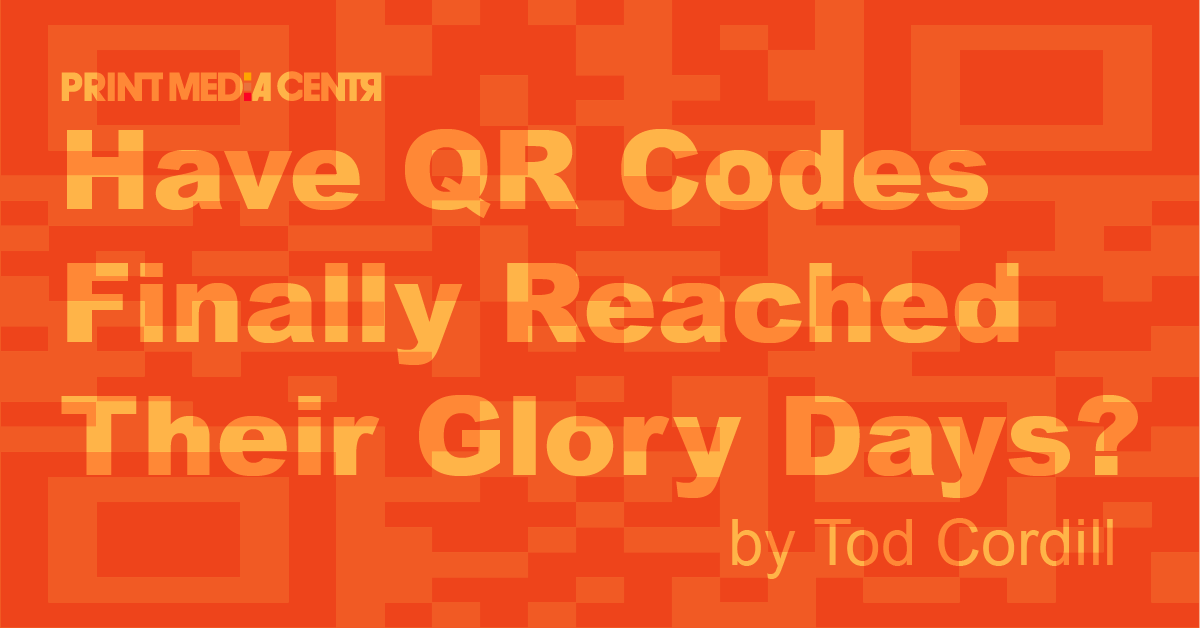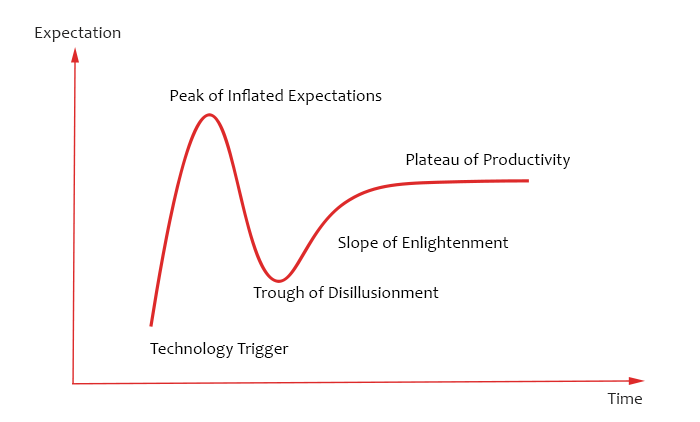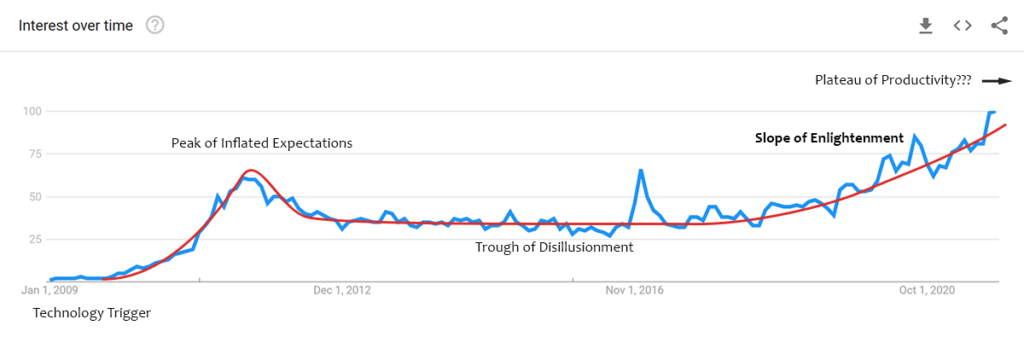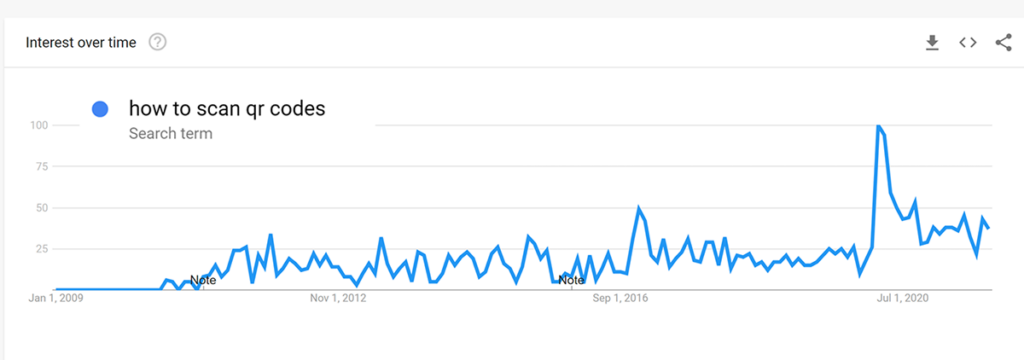
QR codes have been used by marketers since early 2010. As smartphone adoption increased, phone manufacturers and marketers realized the camera on the phones could be used to scan the codes. The hope was that response rates would increase as consumers find scanning a QR code an easy way to respond to printed advertising.
QR codes over the years
Google Trends shows relative search volumes for a search term over a period of time. It is a good indicator of what people are interested in.
Google Trends shows that searches on the term “QR code” increased dramatically in early 2010 before dropping off later in the year. There was also a short-lived increase in interest in late 2016. In the past three years, there’s been consistently increasing interest in this technology.
 Source: Google Trends
Source: Google Trends
Gartner Hype Cycle
The Hype Cycle was developed by consulting company Gartner to represent market adoption of new technologies. The model predicts that some early successes derived from new technologies are over-hyped, causing expectations that can’t be met. Once reality sets in interest in the new technology wanes. Over time problems are worked out and adoption once again grows at a slower, more realistic, pace.

Mapping the Gartner Hype Curve to the QR code search from Google Trends provides an interesting analysis of QR Code adoption.

QR Code Hype
QR Code searches started in early 2010 and increased significantly in 2011, peaking in August. Marketers started using them in direct mail, magazine ads, marketing collateral, and Out Of Home signage. Best Buy is credited as being the first retailer to add QR codes to product displays, allowing consumers to be directed to a detailed product page in their mobile phone browser.
QR Codes were seen as the bridge between the physical and digital worlds.
QR Code Trough of Disillusionment
But the early hype about QR codes did not last. Poorly executed implementations by marketers led to inconsistent consumer experiences, while low-performing mobile cameras and CPUs often made scanning difficult.
The QR code Trough of Disillusionment lasted for nearly six years between 2012 and 2018.
My own QR code disillusionment started when I scanned a QR Code on a home for a sale yard sign. I gleefully anticipated what I would learn as I scanned the QR code. But instead, I got a web page designed for a desktop computer that couldn’t be read on a mobile device. Then an email capture form appeared that was larger than my phone screen. Any button that would have allowed me to dismiss the form was off the screen, making it impossible to get back to the web page.
Yes, (some) marketers tried to kill the QR code.
Poor QR code implementations were publicized in articles like Deborah Corn’s McDUMB! McDonald’s Tries #QR Codes, websites such as wtfqrcodes.com (view in the Wayback Machine), and Scott Stratten’s hilarious Why QR Codes Kill Kittens presentation. Once disillusionment set in few marketers dared to use them.
But phone manufacturers and some marketers never gave up on QR codes. The September 2017 launch of iOS 11 provided native support in the iPhone camera app. In August 2018, Android 9 shipped with support in the Google Lens app.
Intrepid marketers continued to include QR codes as a response alternative in advertising, direct mail, and product brochures. Best Buy kept QR codes on its product displays.
QR Code Enlightenment
Interest in Qr codes started increasing in the second half of 2018. Then in early 2020 COVID happened, causing a dramatic increase in many digital technologies. As restaurants opened back up QR codes that opened a digital menu often replaced paper menus. One enterprising restaurant had a unique QR code for each table. Customers scan the code, view the menu, and place their orders. The kitchen gets the order information as well as the table it goes to.
COVID caused many consumers to use QR codes for the first time. Google Trends shows a huge increase in searches on “how to scan QR codes” in March and April 2020.

Source: Google Trends
Many countries, such as Egypt, Dubai, and Turkey, require QR code vaccine records. States such as Virginia and California, are providing QR code vaccine records that can be used as validation for air travel.
Are we in the QR Codes Glory Days?
Smartphone technology now allows QR codes to be quickly and consistently scanned. Consumers have learned how to use QR codes. They have finally reached the critical mass necessary to be an effective, and likely expected, a tool to enhance interaction with marketing materials.












